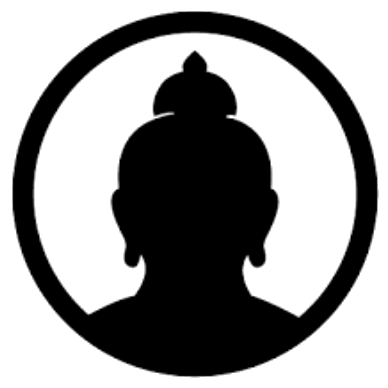“There are many myths about hypnosis, mostly coming from media presentations,” like fictional films and novels, says Irving Kirsch, a lecturer and director of the Program in Placebo Studies at Harvard Medical School. But setting aside pop culture clichés, Kirsch says hypnosis is a well-studied and legitimate form of adjunct treatment for conditions ranging from obesity and pain after surgery to anxiety and stress.
YOU MIGHT ALSO LIKE
CLEAR ALL
BY TOPIC
BY TEACHER
BY TYPE
FILTER

TOPIC
- Athlete Well-Being (23)
- Depression (20)
- Hypnosis (19)
- Self-Care (19)
- Illness and Injury (18)
- Weight Concerns (17)
- Physical Health (16)
- BIPOC Well-Being (15)
- Stress Management (15)
- Meditation (14)
- Brain Health (11)
- Chronic Pain (11)
- Cancer (10)
- Chronic Health Conditions (10)
- Honoring Emotion (10)
- Psychedelic Research (10)
- Stress (10)
- Trauma Healing (10)
- Black Well-Being (9)
- Parenting (9)
- Autoimmune Disease (8)
- Breathwork (8)
- Entrepreneurship (8)
- Somatic Practices (8)
- Trauma (8)
- Child’s Trauma (7)
- Consciousness (7)
- Embodiment (7)
- Epigenetics (7)
- Mindfulness (7)
- Neuroplasticity (7)
- Performance Pressure (7)
- Self-Limiting Beliefs (7)
- Caregiver Well-Being (6)
- Chronic Anxiety (6)
- Healthy Eating (6)
- Mental Health Challenges (6)
- Mindfulness Meditation (6)
- Talk Therapy (6)
- Well-Being (6)
- Addiction (5)
- Body Mapping (5)
- Cognitive Behavioral Therapy (5)
- Dementia (5)
- Diet and Nutrition (5)
- Exercise (5)
- Living with Illness (5)
- Mindfulness Practices (5)
- Neurodiversity (5)
- Performance Anxiety (5)
- Psychedelic Journey (5)
- Psychedelic-Assisted Therapy (5)
- Psychology (5)
- Self-Pressure (5)
- Suicide (5)
- Yoga (5)
- Awareness (4)
- Ayahuasca (4)
- Buddhism (4)
- Burnout (4)
- Disabled Well-Being (4)
- DMT (4)
- Dysfunctional Childhood (4)
- Emotional Intelligence (EQ) (4)
- Female Empowerment (4)
- Growth Mindset (4)
- Healing Approaches (4)
- Leadership (4)
- LGBTQIA Well-Being (4)
- Memory (4)
- Peak Performance (4)
- PTSD (4)
- Resilience (4)
- Science and Spirituality (4)
- Setting Limits and Boundaries (4)
- The Feldenkrais Method (4)
- Young Adult Well-Being (4)
- Addiction Recovery (3)
- Body Scan Meditation (3)
- Child’s Emotional Growth (3)
- Clinical Depression (3)
- Community Healing (3)
- Courage (3)
- Eating Disorders (3)
- Grief (3)
- Happiness (3)
- Latinx Well-Being (3)
- LSD (3)
- Men’s Well-Being (3)
- Neuropsychology (3)
- Other Dimensions and Beings (3)
- Polyvagal Theory (3)
- Rest (3)
- Self-Actualization (3)
- Self-Development (3)
- Self-Discovery (3)
- Self-Esteem (3)
- Self-Healing (3)
- Self-Love (3)
- Shame (3)
- Sleep (3)
- Sleep Disorders (3)
- Sudden Weight Change (3)
- Synesthesia (3)
- Trauma-Informed Therapy (3)
- Traumatic Grief (3)
- Women’s Well-Being (3)
- Work-Life Balance (3)
- AAPI Well-Being (2)
- ADD/ADHD (2)
- Anger (2)
- Anger Management (2)
- Betrayal (2)
- Climate Change (2)
- Communication Skills (2)
- Compassion (2)
- Curiosity (2)
- Death or Loss of a Loved One (2)
- Disconnection (2)
- Divorce and Breakup (2)
- Empathy (2)
- Family Dynamics (2)
- Genetics (2)
- Goal Setting (2)
- Holotropic Breathwork (2)
- Human Potential (2)
- Indigenous Healing Approaches (2)
- Inflammation (2)
- Inner Life (2)
- Insomnia (2)
- Integrative Medicine (2)
- Ketamine (2)
- Laughter Therapy (2)
- Life-Altering Injury (2)
- Lifestyle Medicine (2)
- MDMA (2)
- Oneness (2)
- Panic Attacks (2)
- Parapsychology (2)
- Perception (2)
- Pregnancy and Childbirth (2)
- Psilocybin (2)
- Relationship Challenges (2)
- Religious Experience (2)
- Self-Compassion (2)
- Self-Mastery (2)
- Somatic Experiencing (2)
- Suffering (2)
- Tarot (2)
- Transcendent Experience (2)
- Abandonment (1)
- Activism/Service (1)
- Acupressure (1)
- Acupuncture (1)
- Aging (1)
- Asking for Help (1)
- Astral Projection (1)
- Attachment Theory (1)
- Authenticity (1)
- Biofeedback (1)
- Building Character (1)
- Cannabis/CBD (1)
- Child’s ADD/ADHD (1)
- Child’s Anxiety (1)
- Cognitive Psychology (1)
- Collaboration (1)
- Collective Trauma (1)
- Compassion Meditation (1)
- Connection (1)
- Connection with Nature (1)
- Creative Well-Being (1)
- Cross-Cultural Dynamics (1)
- Cross-Cultural Parenting (1)
- Death and Dying (1)
- Decision Making (1)
- Dream Analysis (1)
- Dreamwork (1)
- Drug Policy (1)
- Ego Dissolution (1)
- Emotional Labor (1)
- Empowerment (1)
- Endurance (1)
- Enlightenment (1)
- Environmental Justice (1)
- Facing Own Death (1)
- Failure (1)
- Fear (1)
- Fellowship and Community (1)
- Flower Essences (1)
- Focus (1)
- Forest Bathing (1)
- Forgiveness (1)
- Friendship (1)
- Guided Imagery (1)
- Guilt (1)
- Habit Formation (1)
- Handling a Loved One’s Illness (1)
- Holism (1)
- Identity (1)
- Imagination and Creativity (1)
- Imposter Syndrome (1)
- Incarceration (1)
- Indigenous Well-Being (1)
- Inner Peace (1)
- Intergenerational Trauma (1)
- Joy (1)
- Kundalini Yoga (1)
- Life Challenges (1)
- Living as an Empath (1)
- Loneliness (1)
- Lovingkindness (1)
- Massage (1)
- Mysticism (1)
- Obsessions/Compulsions (1)
- Offering Support to Others (1)
- Personal Development (1)
- Personality Typing (1)
- Plant Spirit Medicine (1)
- Plant-Based Medicine (1)
- Positive Psychology (1)
- Positive Self-Talk (1)
- Positive Thinking (1)
- Postpartum Depression (1)
- Prayer (1)
- Presence (1)
- Problem Solving (1)
- Productivity (1)
- Psychoanalysis (1)
- Qigong (1)
- Racial Healing (1)
- Racism (1)
- Regret (1)
- Romantic Relationships (1)
- Self-Expression (1)
- Self-Hypnosis (1)
- Self-Reflection Practices (1)
- Self-Worth (1)
- Sex (1)
- Smoking Addiction (1)
- Social Anxiety (1)
- South American Shamanism (1)
- Speaking Your Truth (1)
- Spiritual Awakening (1)
- Spiritual Development (1)
- Spiritual Growth (1)
- Spiritual Healing (1)
- Spirituality and Health (1)
- Subconscious (1)
- T’ai Chi (1)
- Tapping/EFT (1)
- The Yips (1)
- Tibetan Buddhism (1)
- Transformation (1)
- Transgender Well-Being (1)
- Veteran Well-Being (1)
- Visions and Hallucinations (1)
- Visualization (1)
- Vulnerability (1)
- Work Challenges (1)
- Yoga Therapy (1)
FILTER

TEACHER
- Jamie Wheal (3)
- Jessica Dore (3)
- John Sarno (3)
- Naomi Osaka (3)
- Robin Carhart-Harris (3)
- Stephen Porges (3)
- Steven Kotler (3)
- David Eagleman (2)
- Jill Bolte Taylor (2)
- Joanne Cacciatore (2)
- Judith Orloff (2)
- Karla McLaren (2)
- Michael Phelps (2)
- Norman Fischer (2)
- Phillip Moffitt (2)
- Reginald Ray (2)
- Simone Biles (2)
- Wim Hof (2)
- Adam Grant (1)
- Anil Seth (1)
- Ashley Neese (1)
- Bessel van der Kolk (1)
- Bruce Lipton (1)
- Chan Khong (1)
- Daniel Gilbert (1)
- David Perlmutter (1)
- David Spiegel (1)
- Deepak Chopra (1)
- Edward Hallowell (1)
- Ellen Langer (1)
- Eric Maisel (1)
- Erin Clabough (1)
- Francoise Bourzat (1)
- Franz Alexander (1)
- Graham Hancock (1)
- Hyla Cass (1)
- Jane E. Brody (1)
- Jean Shinoda Bolen (1)
- Jessamyn Stanley (1)
- Larry Dossey (1)
- Louise Hay (1)
- Marc Ian Barasch (1)
- Martha Beck (1)
- Martin Seligman (1)
- Monnica Williams (1)
- Moses (1)
- Moshé Feldenkrais (1)
- Nataly Kogan (1)
- Richard Davidson (1)
- Roxanne Dault (1)
- Scott Shute (1)
- Shiva Rea (1)
- Stan Tatkin (1)
- The Dalai Lama (1)
- Toni Bernhard (1)







